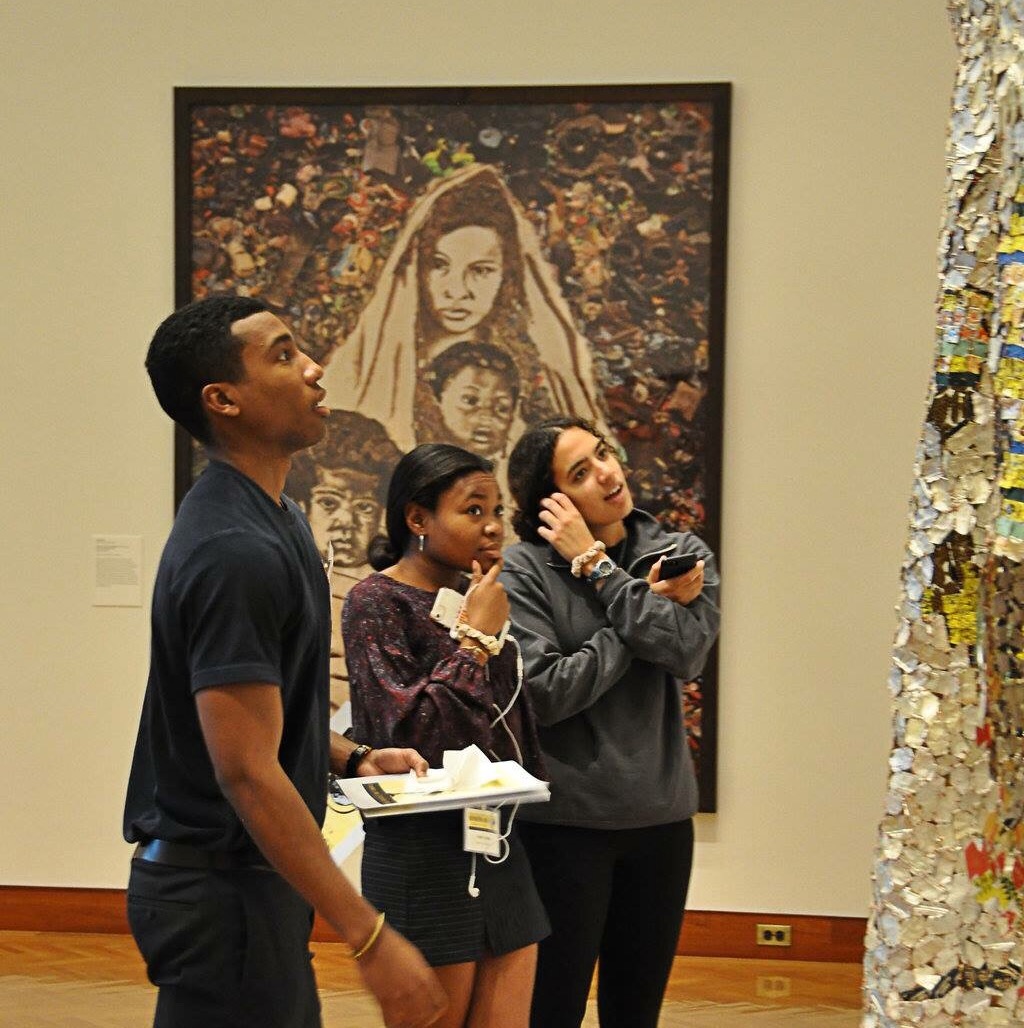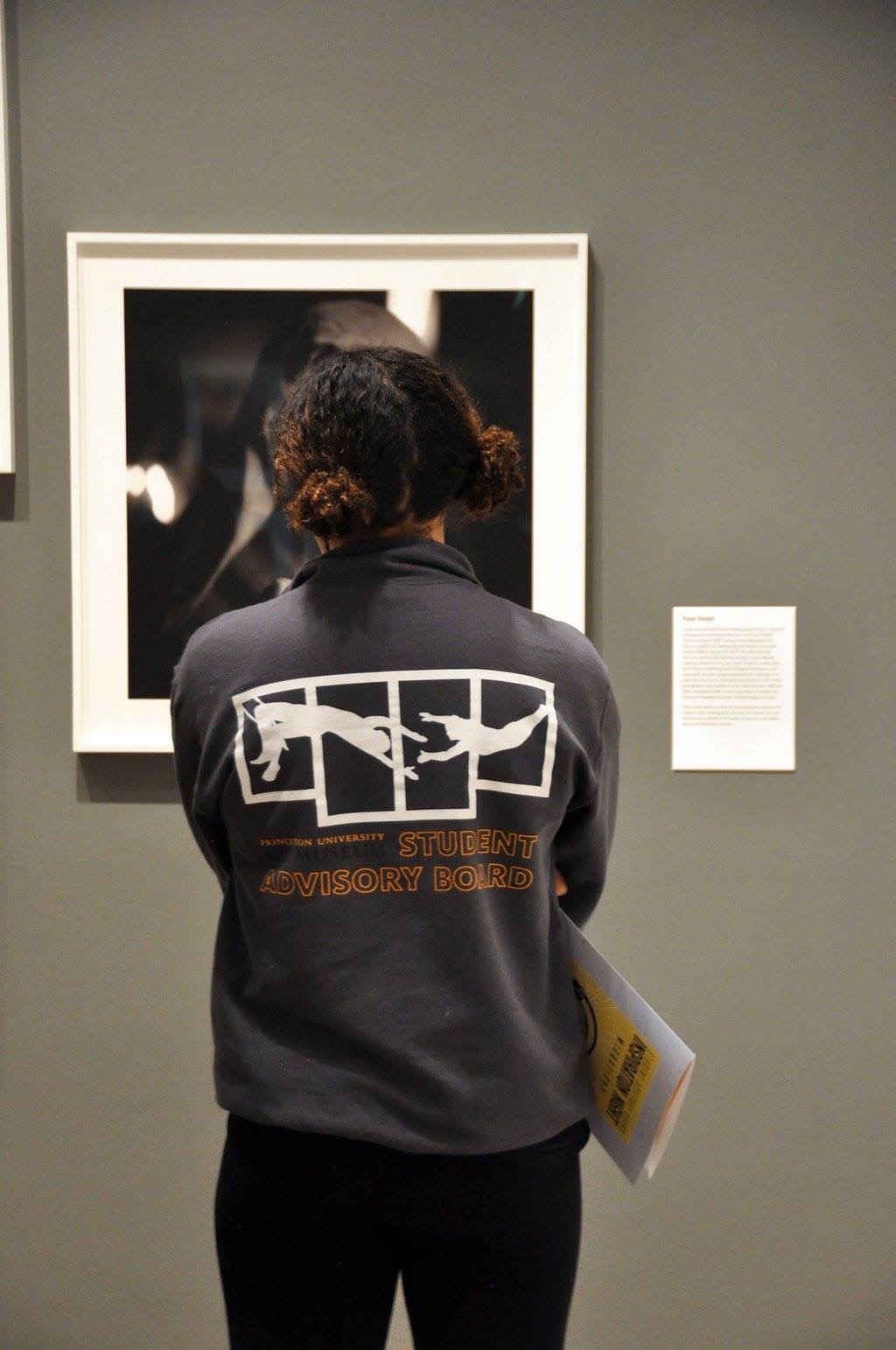If you were to take a tour of Princeton’s campus, your tour guide would point out various things that are unique to Princeton’s campus. For example, we have the third largest university chapel in the world, and Frist Campus Center used to be Einstein’s laboratory. But, something that is incredibly special about Princeton’s campus–and I feel we don’t talk enough about –is the fact that Princeton has an amazing art museum directly on campus.
The Princeton University Art Museum (PUAM), whose collections hold works by artists ranging from Cézanne to Basquiat, is a great spot for tourists and community members to visit. However, it is arguably an even greater spot for students.
This week I share a little bit about my experiences at the art museum and interview Juliana Ochs Dweck, the Andrew W. Mellon Curator of Academic Engagement, to talk about the different ways the PUAM can serve as a resource for research and studies at Princeton. After all, as Dweck notes about the university museum, “the whole point is to be a teaching museum.”
To provide some background, it is important to first talk about the museum and its goals. The PUAM has been the recipient of multiple, influential Andrew W. Mellon grants. These challenge grants have supported the PUAM’s goal of using its collections to back the university’s missions in research and teaching. Accordingly, the PUAM sponsors courses, visiting scholars, internships, and the production of scholarly work.
The Art Museum as a Resource for All
Now, understanding how an art museum can be a great resource for art history and visual arts students doesn’t demand an explanation; however, what many might not immediately see is how an art museum can be a resource for an array of students including those in the arts, humanities or the sciences.
For example, the art museum was integral to my experience in my writing seminar, Sex Changes, which was based in gender studies. This is because my entire R3 was based off a still-life painting that was on view at the museum. For my paper, I drew sources from art history, sociology, gender studies and the museum’s collections and staff with the aim of interpreting this one work. In the process of doing so, I launched into a large exploration of still life paintings as a genre and gender relations post World War II. You can read more about how PUAM staff and resources helped me to overcome difficulties in this project here, but ultimately, it becomes clear that the Princeton University Art Museum holds numerous academic opportunities for a variety of Princeton students not just those interested art history.
Students of an array of majors could use the museum, much like I did, by selecting an object in the collections as the subject for research. Analyzing an artwork can lead to really cool crossovers into other disciplines. For example, an exhibition of Japanese paintings would be valuable to an East Asian Studies major, while photographs of protests in the 1960s may be interesting to a politics major or history major. Currently, the museum has an exhibition up called Nature’s Nation: American Art and Environment which comments on the American landscapes, its transformations, and the growth of ecological consciousness.
What it really comes down to is using art as a way of knowing. A work of art is the product of both the artist–their intentions, mentality, and background–and the setting–the historical and cultural context of the work. Because of this, artwork is often reflective of the time when it was created or of the person who created it. As a result, art works, when interpreted, can provide us with a new way to look at a concept we previously understood through a different lens or even introduce an entirely new idea or theory. Nonetheless, depending on what perspective you approach your interpretation from–whether that be gender studies, environmentalism, Japanese culture, or politics–the art work presents information to you in a unique way that can produce new meaning.

How to Access the Art Museum Resources
The Museum’s location on campus and its hours make it easy for students interested in studying the collections to frequent the galleries. Additionally, almost all of the one hundred thousand objects in the museum’s collections are viewable online with collections information and high resolution images to make student access easier. This enables you to search the collections for specific works that may not be currently on view or browse by key words, time periods, medium, etc.
But student access goes further! As Dweck told me, “undergraduates have the best access to the collections of any public.” If you find something in the collections online that is not currently on view, but which is useful for your research, the museum allows students check out works. Dweck explains this is for students interested in one-on-one time with an object if its related to a course or some sort of a sustained investigation such as junior or senior independent work. The museum will arrange research appointments with the object in a study room with someone from the museum in room to handle the piece while the student studies it.
Students also have easy access to the curators in the museum. Interviewing curators who have put together a show relating to your topic/field can be really insightful as well. Curators have worked closely with the collections and studied not only individual objects but the relations between them. Dweck adds, “whenever a curator receives an email, specifically from an undergraduate, they give a pretty quick response. Curators just love that sort of curiosity and are very happy to share any information they have on the object–which usually goes way beyond what you can find online.”
Some curators specialize in specific genres of art; you can find their contact information and concentration on the museum website under the Staff Directory.

As Dweck aptly summarizes, “the collection is open, and curiosity is very welcomed.” Reach out to museum staff if you ever have any questions or interests, and if you haven’t recently, take a study break to visit the museum!
I hope to see you in the galleries,
–Raya Ward, Natural Sciences Correspondent
P.S.: If you’re interested in getting more involved in the Princeton University Art Museum, here are a few ways:
- Summer Internships* – Looking for something to do this summer? The PUAM has paid internships for graduate and undergraduate students in the summer that come with free housing. Applications for Summer 2019 will open in January. In the past many summer interns come from other universities but Princeton students are given priority in these paid internships.
- McCrindle Academic Year Internships – During the academic year as well, the PUAM hosts interns that will get to work on projects with curator and explore the areas the curator is working in.
- Tour guides – Students can also volunteer to be museum tour guides. Applications come around each September so be on the lookout next fall.
- The Student Advisory Board (SAB) – The Student Advisory Board for the Art Museum organizes and hosts events in the art museum throughout the year ranging from visiting artist lectures, guided tours, discussions, and galas. In fact, the SAB’s annual winter gala was December 6th focusing on the current exhibition Nature and Nation. To get more involved, you should also apply now to be a part of the SAB while they are still accepting applications.

